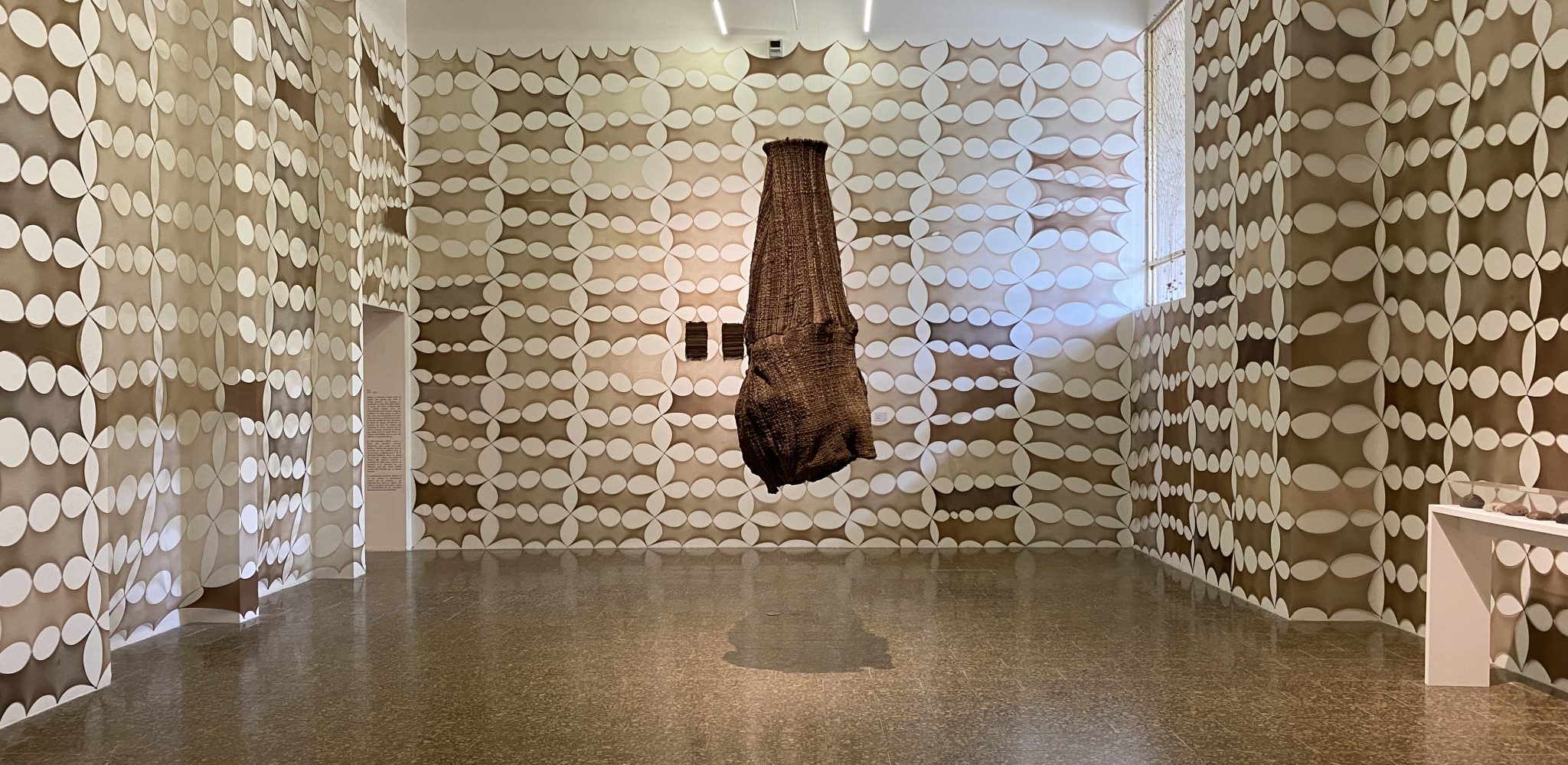Cicatrices at Museo La Tertulia, Cali, takes the visitor through the Colombian artist’s interests in nature, mythology and the female body
Reaching from gallery floor to ceiling, Universo (2021) is a cosmos-bound column of sewn-together mosquito nets. Through the sheer material, embroidered with images of flora, including trees that, like Jack’s beanstalk, stretch way beyond their natural height, we see a small garden of real, living potted plants at the base. Universo is the most recent in this multiroom survey of recent works (Lizarazo’s first institutional outing, despite a career several decades old), which together takes the visitor through the Colombian artist’s interests in nature, mythology and the female body, and how these three subjects intersect.
Despite the grand gestures, of which Universo is typical, it becomes apparent that Lizarazo is a more innovative imagemaker than sculptor. Estómago (Stomach, 2005), a red knotted textile net containing a nest of coiled fabric tubes, is reminiscent of an Ernesto Neto sculpture, more abject than the art of her Brazilian peer, but nonetheless not quite disgusting enough; while Piel (Skin, 2017), a series of women’s brown tights conjoined to stretch across every centimetre of one gallery’s wallspace, nods to Eva Hesse’s use of pantyhose, but doesn’t really progress that feminist and surrealist lineage further.

Luz Lizarazo, Recuerdo de Infancia, 2021, oil on fabric, 240 x 191 cm. Courtesy the artist and Museo La Tertulia, Cali.
Far more engrossing is the sheer oddity of Lizarazo’s pictorial works, which have little in the way of precedents in mainstream art history. Alucinaciones (Hallucinations, 2018) features dozens of black-and-white linocut prints made on satin fabric, in which women merge with flora and fauna, becoming hybrid entities inseparable from the landscape in which they sit or stand. In one, a nude woman rides a giant bird, her braided ponytail planting itself among the grass below. In others, faces merge with trees and plants flourish from between a woman’s legs. This weirdness isn’t surrealist-weird, but the strangeness (to this viewer) of non-Western cosmologies. Mundo Intermedio (Intermediate World, 2019) is a series of paintings on fabric that take imagery from various precolonial Colombian mythology: in Nascimento (Birth, 2019) a giant snake circles a naked woman. She projects a huge gush of light from her vulva, illuminating stars and planets that presumably have been propelled from the same source.
There might be a legitimate question, given the references to indigenous mythos, cited in the accompanying wall texts, as to why the woman depicted is pale skinned, but in painting the woman in her own image, Lizarazo presents the scenes not as anthropological studies, but as a self-portrait in which her womanhood is inextricably linked with all life, seemingly, from the beginning of time. Sex and conception as the Big Bang is also the theme of Recuerdo de Infancia (Childhood Memory, 2021), one of dozens more paintings on fabric, in which a naked woman stands over a prone naked man, a giant rose bearing down on his vulnerable body, while in the background other naked figures are shown in yogic poses. Here, at least, the origins of the world never looked so fun.
Cicatrices at Museo La Tertulia, Cali, 14 July – 29 November
